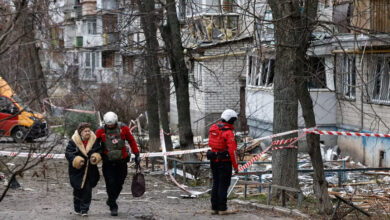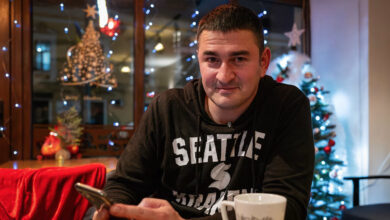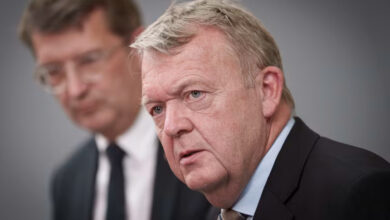
(CNN) – After almost three months of intense bombardment, thousands of reported deaths and countless tales of horror and starvation, the battle for the city of Mariupol is nearing its conclusion.
Ukraine’s military announced late Monday that its forces had completed their “combat mission” at the sprawling Azovstal steelworks plant, which was for weeks the last major holdout in a city otherwise occupied by Russian troops. Hundreds of Ukrainian soldiers were evacuated from the facility and efforts were underway to evacuate those still inside.
Mariupol, a port city on the Sea of Azov, has been the scene of some of the most intense fighting since Russia launched its invasion of Ukraine in late February. It was there that Russia carried out deadly strikes on a maternity ward and the bombing of a theater where hundreds of civilians had sought refuge from the violence.
Now there are fears that evidence of further atrocities may be lost forever.
Before the Kremlin took control of Mariupol, the city council accused Russian forces of trying to erase evidence, using mobile crematoria to dispose of bodies and identifying witnesses to any “atrocities” through filtration camps. CNN could not verify that claim.
“Murderers are covering their tracks,” the council alleged.
The Kremlin has denied many of these claims, including using filtration camps to cover up wrongdoing and targeting civilians in Mariupol.
A symbol of resistance
Mariupol became a symbol of Ukrainian resistance during weeks of relentless Russian attacks. While most of the city had already fallen, its defenders held out at Azovstal, where as many as 1,000 civilians had taken shelter at one point. Ukrainian officers described a bleak situation inside the steel plant, as stocks of food and water dwindled and hundreds of wounded were stranded without proper medical care.
Ukrainian President Volodymyr Zelensky has previously said that “tens of thousands” have died in Mariupol, while the regional military governor last month said those killed numbered as many as 22,000 — though death tolls are difficult to verify in the fog of war. Mariupol’s mayor has estimated that 90% of the city’s infrastructure has been damaged, 40% of it beyond repair.
Images of Mariupol’s destruction have become symbols of the Kremlin’s use of indiscriminate firepower in Ukraine, drawing stark visual parallels with the leveling of cities like Syria’s Aleppo or the Chechen capital of Grozny.
Controlling Mariupol is key to Russian efforts to take the wider Donbas region — beyond the separatist-controlled territories — according to Michael Kofman, an expert on the Russian military with the Washington-based Center for a New American Security.
“It’s unrealistic to declare control of the Donbas without actual control over its major cities,” he told CNN in an email last month.
Kofman said the fall of Mariupol should free up manpower and logistics for the Kremlin’s campaign in the rest of Donbas.
But keeping the city under Moscow’s thumb will also take substantial resources. Russia likely needs all the troops it can muster for its offensive in eastern Ukraine, where it has refocused its military efforts after pulling back from other parts of the country.
Artillery fire and air strikes are continuing along the front lines in Luhansk and Donetsk, but the Ukrainian military says it is repelling Russian attempts to gain territory.
Analysts say Russian forces simply tried to flatten Mariupol to make it easier to control — especially given the history of the man put in charge of Russia’s war effort, Gen. Alexander Dvornikov.
Dvornikov led a division in the Kremlin’s pacification campaign in Chechnya from 2000 to 2003 and headed Russia’s forces in Syria from 2015 to 2016. In both cases, the Russian military left destruction in its wake, bombing civilian areas with little regard for casualties.
“He basically annihilated and obliterated the second-largest Syrian town of Aleppo. And his strategy was simply to bombard anything that was alive, target civilian infrastructure — hospitals and schools — and then basically take over what was left,” said Orysia Lutsevych, a research fellow at the UK-based think tank Chatham House.
“It is a similar strategy we are already seeing in Mariupol,” she said last month, while the fighting was still ongoing.
Ukraine’s military intelligence has already accused Dvornikov of overseeing war crimes against the civilian population in Mariupol in the course of the siege.
A full accounting
Of the 450,000 people who lived in the city before the war, a third had already left by mid-April, according to Mariupol Mayor Vadym Boychenko. Only 100,000 residents remain, and those who have fled bring with them the horror stories of war.
Some residents who managed to leave the city have said they were ordered by Russian forces to evacuate to Russia through so-called “filtration camps” — a practice that sparked painful memories of Joseph Stalin’s forced relocation of millions of people to remote parts of the Soviet Union. Russian forces have also reportedly at times barred citizens from leaving.
Many said they took shelter in basements for days on end to hide from the unrelenting artillery fire. One resident previously told CNN he was in a line waiting for fresh drinking water when a blast killed three people in front of him, including one who was decapitated.
The Kremlin has denied many of these claims, including using filtration camps to cover up wrongdoing and targeting civilians in Mariupol.
But Russian forces are already moving quickly to clean up some of the areas worst affected by their offensive, according to Petro Andriushchenko, an adviser to the Mariupol mayor.
“Surprisingly, the plan to clear the debris coincides with the places of greatest destruction … the drama theater, Myru Avenue, and now suddenly it is the hospital,” said Andriushchenko, referring to hospital number three, which was heavily bombed in March.
Video of the aftermath of the bombing showed heavily pregnant women being taken from the hospital; at least one later died.
A Telegram channel that appears to be linked to the new Russian-backed administration in the city has announced that temporary employment is on offer “gathering up the dead” as well as in city improvements.
A full accounting of the devastation there may be impossible as the city comes under full Russian control.
The extent of the alleged war crimes committed in liberated northern Ukrainian cities, such as Bucha and Borodianka, only became apparent after Russian forces had fled.
Those in Mariupol could have been subjected to the same kind of abuses. If the city remains under Moscow’s control, a true record of what happened there may be lost to history.
CNN’s Nathan Hodge contributed to this report




